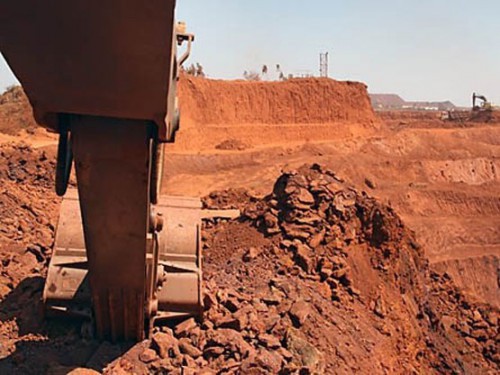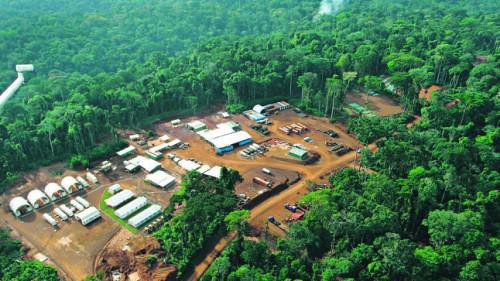06 December 2014
Eleven years after receiving the first mining permit in Cameroon on April 11, 2003, Geovic Cameroon, the subsidiary of the new American and Canadian company, Geovic Mining Corp, abandoned plans to mine bauxite, cobalt and manganese at the Nkamouna site in the Lomié district of East Cameroon.
According to our sources, the offices of the company’s general management in the Bastos district in Yaoundé were emptied and all furniture sold. On the ground in Nkamouna, an employee of Geovic Cameroon contacted by our agency indicated that “Geovic has been on standby for around a year now. They even started selling vehicles parked at the Kongo base (where the mine is supposed to be built).”
This information was confirmed by the former mayor of Lomié, Célestin Assama Mbongo, who provided more detail: “Everything has been at a standstill for a year. Only the company’s caretakers are still visible on the property. The remainder of the staff (around 200 employees) have been on leave. We’re totally disappointed because we had put a lot of hope in this project. We were reassured several times that the project would be launched. Now all we’re seeing are vehicles leaving.
“PEOPLE DON’T BELIEVE IN IT ANYMORE”
According to the former municipal executive of Lomié district, Geovic Cameroon had reached an agreement with Chinese investors to which its 60.5% share of the project would be sold. “Between February and April 2014, the Chinese came here several times. Accompanied by Geovic teams, they made site visits and took samples. Since then, nothing. In any event, no one here listens to them anymore. People don’t believe in it anymore.”
Indeed, on July 23, 2013, Geovic Mining Corp had announced the signing of a “final agreement” with the Chinese group Jiangxi Rare Metals Tungsten Group Holdings Company Ltd (JXTC), to which the young company American and Canadian company had decided to sell its assets in the cobalt, nickel and manganese mining and development project in Nkamouna in Cameroon.
“This final agreement represents significant progress for the Nkamouna mining project. The project’s development should start once financing is available and will help create jobs and diversify the Cameroonian economy,” Geovic Mining Corp CEO, Michael Mason, had stated.
“GEOVIC: A HOUSE OF CARDS”
According to our sources, what was presented as “a final agreement” in July 2013, was not respected by the parties as Société nationale des investissements (SNI), the State agency with a 39.5% stake in the mining code, felt that the Chinese party had not respected the terms and conditions of the said agreement.
Indeed, the latest episode is but one of a long series of unfulfilled promises and appetising announcements which, in eleven years, have maintained the ever-fleeting dream of seeing the Nkamouna project finally become a reality. Hesitation has not prevented the company from climbing on the Toronto stock exchange because of repeated promises about its potential without the Nkamouna deposit being revaluated.
But all this hesitation came with the benefit of creating doubt about Geovic Mining’s real objectives, characterised by the Les Afriques publication as “a house of cards” whose “other subsidiaries are either inactive or recently created. Most of the group’s assets are made up of its Cameroonian concessions.”
The Nkamouna mining project was valued at 615 million USD, or approximately 306 billion FCFA. Reserves are around 121 million tonnes of mineral resources with an average of 0.23% cobalt, 0.65% nickel and 1.35% manganese. Based on a feasibility study completed in 2011, the project should create 800 direct jobs and 400 indirect jobs.
Brice R. Mbodiam




